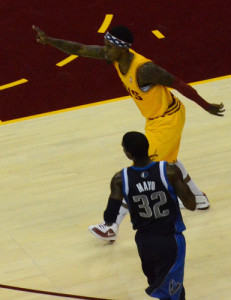Should a Defender Move out of Position to Deflect a Pass?

To Deflect a Pass a defender often has to move sometimes out of a good stance or even break free of their team defensive formation. The movement of deflecting a pass therefore creates a weakness within the overall defensive structure the team utilises. Whether this is a good choice though comes down ultimately to the defender making the right read, and if going after a pass in an attempt to deflect the basketball, that they actually achieve that goal. Missing in an attempt to deflect a pass will result in the receiver becoming free of a defender or at the very least the defender being out of position so there is a clear advantage to the offensive player.
Some coaches believe in not attempting to deflect a pass unless it is an absolute certainty. This philosophy however makes playing high defensive pressure basketball very challenging as player will become reserved and timid in their approach to how they play. Instead of playing for the deflection, defensive players are often coached within this mindset to be ready for when the offensive player catches the ball to pressure and contain the offensive player so they are never out of position.
The problem is with strategy is that the skill of wilfully pressuring the ball handler while still not providing an advantage to the offensive player is an advanced skill. One that is very difficult to implement and takes an ongoing focus. All too often, the act of pressure the ball is confused with containing the dribbler and the two are quite different.
However, another school of thought focuses on the premise of allowing each defensive player the opportunity to attempt to deflect a pass if the player feels the opportunity warrants the risk. Distinguishing between what is an acceptable risk and what is a chance not worth taking is the thin line that exists between this strategy being a success or failure.
For this strategy to become a success, players need to have an opportunity to understand the “reads” which make a good opportunity, and those that constitute a poor option. Some points to discuss are:
- Player positioning one pass away from the ball
- Players being wide in their upper body; arms extended which push the passing lane wider
- Head positioning to see the flight of the ball sooner
- The player’s ability to be explosive and cover distance
- The defender carrying their hands through the passing on their attempt to deflect a pass
Nevertheless, understanding what the reads are is only the first and the easiest step. The next phase which is the hardest and longest is the drilling of this specific situation. The players must be provided with ongoing and constant practice. What will happen is as players become more and more capable of making the right choice they will then start to be able to take bigger risks and still achieve a positive outcome.
At the end of the day, no player or coach wants to see and easy scoring opportunities out of the situation where a player tries to deflect a pass and fails. However, not attempting to deflect a pass is reactive basket and no road to success.



Leave a Reply